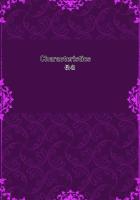Happily, however, there is a criterion of morphological truth, and a sure test of all homologies. Our lobster has not always been what we see it; it was once an egg, a semifluid mass of yolk, not so big as a pin's head, contained in a transparent membrane, and exhibiting not the least trace of any one of those organs, whose multiplicity and complexity, in the adult, are so surprising. After a time a delicate patch of cellular membrane appeared upon one face of this yolk, and that patch was the foundation of the whole creature, the clay out of which it would be moulded. Gradually investing the yolk, it became subdivided by transverse constrictions into segments, the forerunners of the rings of the body. Upon the ventral surface of each of the rings thus sketched out, a pair of bud-like prominences made their appearance--the rudiments of the appendages of the ring. At first, all the appendages were alike, but, as they grew, most of them became distinguished into a stem and two terminal divisions, to which in the middle part of the body, was added a third outer division; and it was only at a later period, that by the modification, or absorption, of certain of these primitive constituents, the limbs acquired their perfect form.
Thus the study of development proves that the doctrine of unity of plan is not merely a fancy, that it is not merely one way of looking at the matter, but that it is the expression of deep-seated natural facts. The legs and jaws of the lobster may not merely be regarded as modifications of a common type,--in fact and in nature they are so,--the leg and the jaw of the young animal being, at first, indistinguishable.
These are wonderful truths, the more so because the zoologist finds them to be of universal application. The investigation of a polype, of a snail, of a fish, of a horse, or of a man, would have led us, though by a less easy path, perhaps, to exactly the same point. Unity of plan everywhere lies hidden under the mask of diversity of structure--the complex is everywhere evolved out of the simple. Every animal has at first the form of an egg, and every animal and every organic part, in reaching its adult state, passes through conditions common to other animals and other adult parts; and this leads me to another point. Ihave hitherto spoken as if the lobster were alone in the world, but, as I need hardly remind you, there are myriads of other animal organisms.
Of these, some, such as men, horses, birds, fishes, snails, slugs, oysters, corals, and sponges, are not in the least like the lobster.
But other animals, though they may differ a good deal from the lobster, are yet either very like it, or are like something that is like it. The cray fish, the rock lobster, and the prawn, and the shrimp, for example, however different, are yet so like lobsters, that a child would group them as of the lobster kind, in contradistinction to snails and slugs; and these last again would form a kind by themselves, in contradistinction to cows, horses, and sheep, the cattle kind.
But this spontaneous grouping into "kinds" is the first essay of the human mind at classification, or the calling by a common name of those things that are alike, and the arranging them in such a manner as best to suggest the sum of their likenesses and unlikenesses to other things.
Those kinds which include no other subdivisions than the sexes, or various breeds, are called, in technical language, species. The English lobster is a species, our cray fish is another, our prawn is another. In other countries, however, there are lobsters, cray fish, and prawns, very like ours, and yet presenting sufficient differences to deserve distinction. Naturalists, therefore, express this resemblance and this diversity by grouping them as distinct species of the same "genus." But the lobster and the cray fish, though belonging to distinct genera, have many features in common, and hence are grouped together in an assemblage which is called a family. More distant resemblances connect the lobster with the prawn and the crab, which are expressed by putting all these into the same order. Again, more remote, but still very definite, resemblances unite the lobster with the woodlouse, the king crab, the water flea, and the barnacle, and separate them from all other animals; whence they collectively constitute the larger group, or class, 'Crustacea'. But the 'Crustacea' exhibit many peculiar features in common with insects, spiders, and centipedes, so that these are grouped into the still larger assemblage or "province" 'Articulata'; and, finally, the relations which these have to worms and other lower animals, are expressed by combining the whole vast aggregate into the sub-kingdom of 'Annulosa'.
If I had worked my way from a sponge instead of a lobster, I should have found it associated, by like ties, with a great number of other animals into the sub-kingdom 'Protozoa'; if I had selected a fresh-water polype or a coral, the members of what naturalists term the sub-kingdom 'Coelenterata', would have grouped themselves around my type; had a snail been chosen, the inhabitants of all univalve and bivalve, land and water, shells, the lamp shells, the squids, and the sea-mat would have gradually linked themselves on to it as members of the same sub-kingdom of 'Mollusca'; and finally, starting from man, I should have been compelled to admit first, the ape, the rat, the horse, the dog, into the same class; and then the bird, the crocodile, the turtle, the frog, and the fish, into the same sub-kingdom of 'Vertebrata'.















